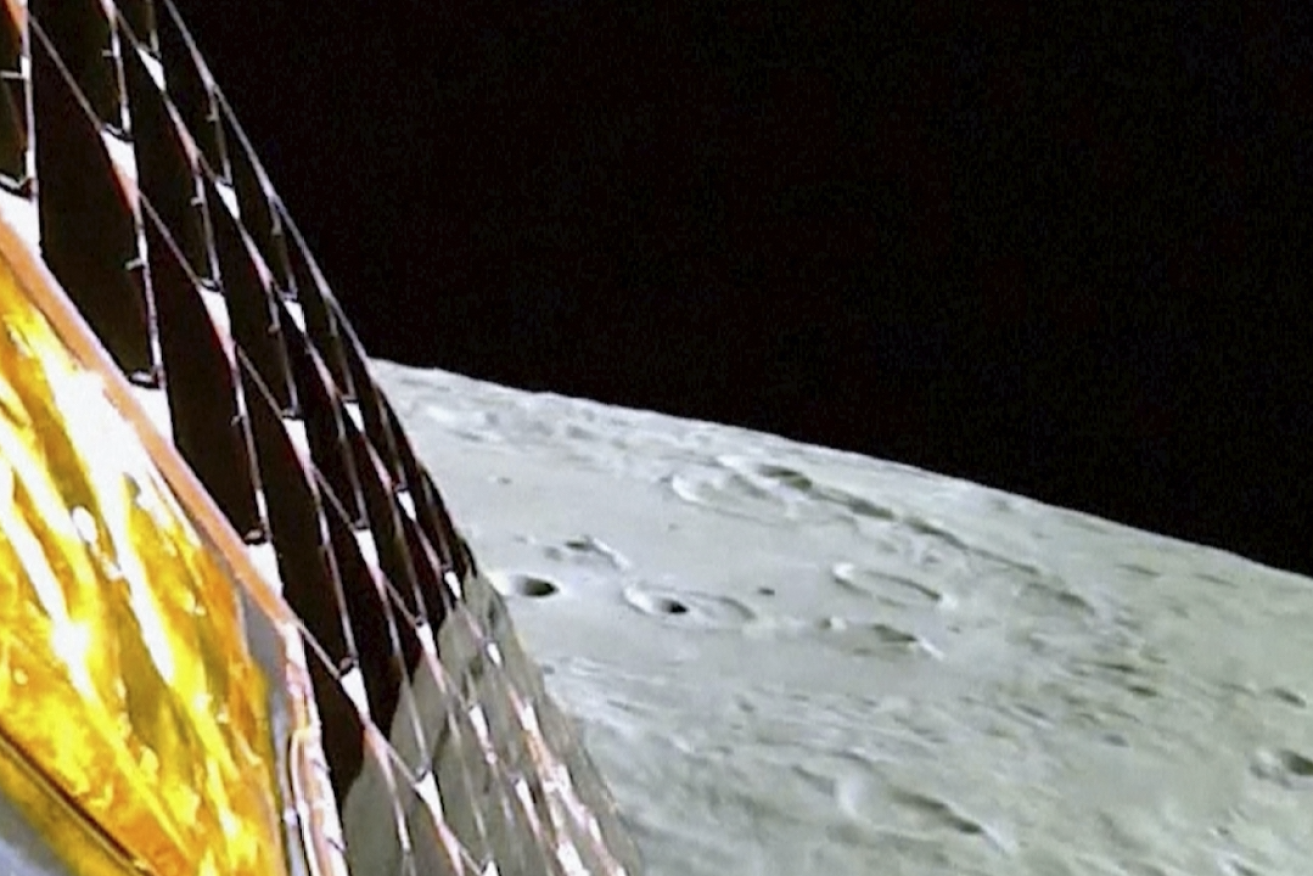India lands spacecraft on moon
An Indian spacecraft has become the first to land on the rugged, unexplored south pole of the moon in a mission seen as crucial to lunar exploration and India’s standing as a space power, just days after a similar Russian lander crashed.

India'a Chandrayaan-3 spacecraft prepares for landing. Photo: AAP/India Space Research Organisation
“This moment is unforgettable. It is phenomenal. This is a victory cry of a new India,” Prime Minister Narendra Modi said after waving the Indian flag as he watched the landing from South Africa where he is attending a BRICS summit.
Scientists and officials clapped, cheered and hugged each other as the spacecraft landed and people across India broke out in celebration, setting off firecrackers and dancing in the streets.
“India is on the moon,” said S Somanath, chief of the Indian Space Research Organisation (ISRO) as the Chandrayaan-3 spacecraft landed, making India the fourth country to successfully land a spacecraft on the moon after the United States, China and the former Soviet Union.
ISRO shared pictures from the spacecraft showing the moon’s surface and the leg and shadow of the lander.
This was India’s second attempt to land a spacecraft on the moon and comes less than a week after Russia’s Luna-25 mission failed.
People across the country were glued to television screens and said prayers as the spacecraft approached the surface.
Nearly seven million watched the YouTube live stream.
Chandrayaan means “moon vehicle” in Hindi and Sanskrit.
In 2019, ISRO’s Chandrayaan-2 mission successfully deployed an orbiter but its lander crashed.
Russian President Vladimir Putin congratulated India in a message to Modi published on the Kremlin website.
“This is a big step forward in space exploration and of course a testament to the impressive progress made by India in the field of science and technology,” he said.
NASA administrator Bill Nelson also congratulated the ISRO on the landing.
“And congratulations to India on being the 4th country to successfully soft-land a spacecraft on the Moon,” he said on social media platform X.
“We’re glad to be your partner on this mission!”
The Chandrayaan-3 is expected to remain functional for two weeks, running a series of experiments including a spectrometer analysis of the mineral composition of the lunar surface.
The moon rover will take a few hours or a day to come out of the spacecraft, Somanath told reporters, adding that the landing has given India confidence to extend its reach to possible voyages to Mars and Venus.
India is also planning to launch a mission in September to study the sun, Somanath said.
A human space flight is also planned and, while no official date has been announced, preparations are likely to be ready by 2024.
The landing is expected to boost India’s reputation for cost-competitive space engineering.
The Chandrayaan-3 was launched with a budget of about 6.15 billion rupees ($A114 million), less than the cost to produce the 2013 Hollywood space thriller Gravity.
Rough terrain makes a south pole landing difficult, and a first landing is historic.
The region’s ice could supply fuel, oxygen and drinking water for future missions.
“Landing on the south pole would actually allow India to explore if there is water ice on the moon. And this is very important for cumulative data and science on the geology of the moon,” said Carla Filotico, a partner and managing director at consultancy SpaceTec Partners.
-AAP




